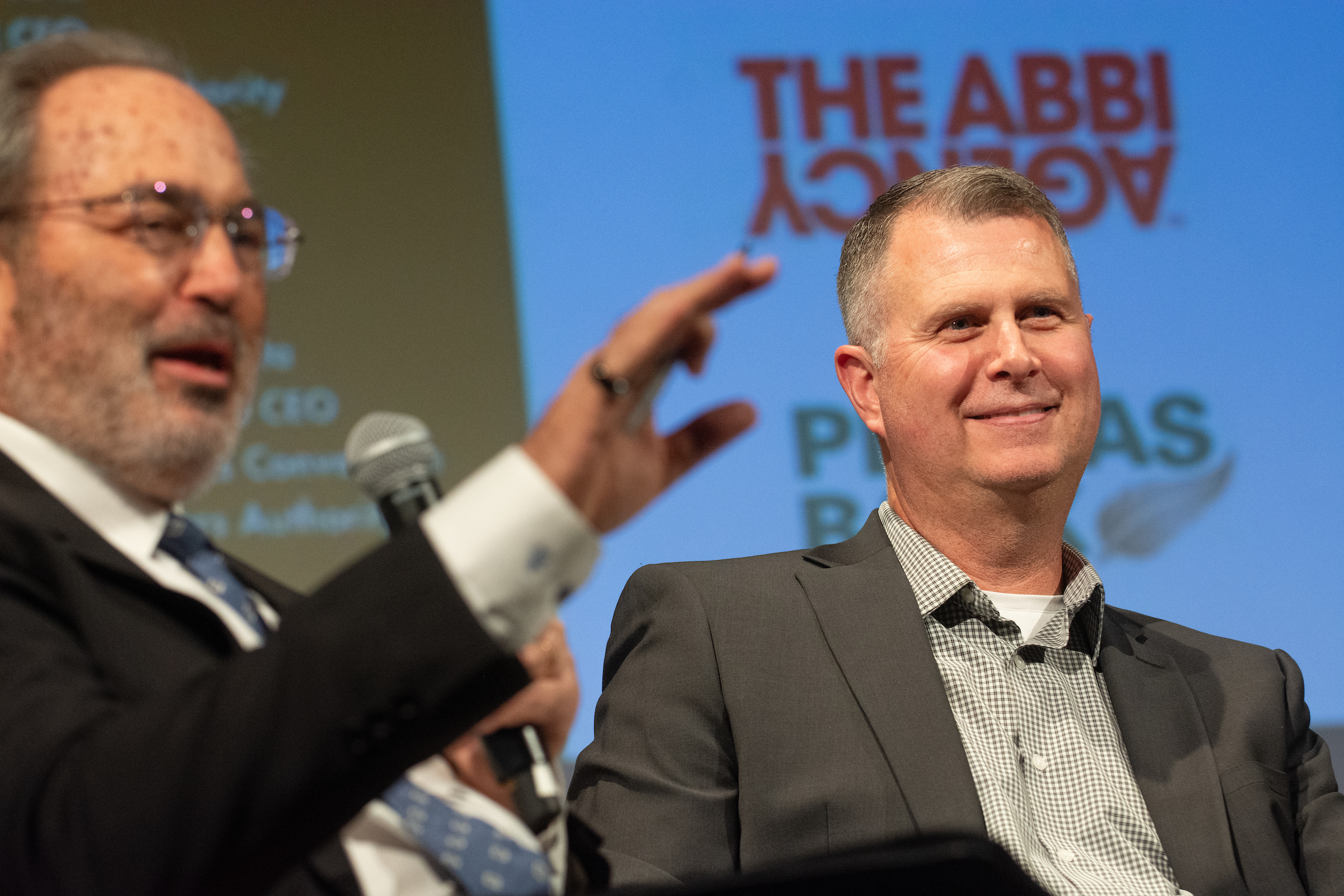Reno-Tahoe Airport Authority CEO Daren Griffin said visitors tell him they love the size of the airport and how easy it is to get through.
That’s why the goal of the airport’s ongoing billion-dollar capital improvement project is to modernize the facility and make it “big enough to fit this community” but not lose the “sense of convenience and ease that everybody loves about this airport.”
Griffin’s comments came Tuesday during a wide-ranging conversation about the future of the region as part of IndyTalks: Economic Development in Northern Nevada, moderated by Nevada Independent Editor/CEO Jon Ralston.
The airport’s upgrade project will build a new ground transportation center that will accommodate rental cars, helping alleviate congestion for people seeking to park their own cars in the garage used for both traditional parking and rental cars. It will also include a new ticketing hall, a new loop road to drop off and pick up passengers and possibly two new concourses.
“The only way to the airport is in a car, and that’s not going to change for at least 20 years,” Griffin said, explaining why the project is focused on cars instead of other modes of transportation.
Griffin also noted that rideshare services are skyrocketing to “pre-pandemic” numbers.
“We’re looking at all of our infrastructure and how we accommodate the various consumer modes,” he continues.
Griffin noted that “nobody has perfect foresight of how our region’s going to grow,” and the airport is in a “little bit of a catch-up mode” in order to adjust to current demands.
“By the time we’re done in 2030, we’ll be behind again if we’re not planning for that,” he said.

Serving a changing community
Griffin said attracting airlines to partner with Reno involves educating those companies about the region, and that when “an [airline] executive that comes here to talk to us has 50 cities [to talk to], that’s what we’re competing with for their attention.”
This doesn’t seem to stop RNO from growing economically, though. Griffin announced that 10-year contracts with multiple airlines have recently been signed with RNO.
“For them to commit to being here, flying airplanes for 10 years in a market this size, is extraordinary,” Griffin says.
The conversation on the area’s economic development included a robust discussion about inflation, which Griffin said affects everyone, including those working on construction at RNO. Although these jobs pay “a living wage,” he said, workers still struggle to keep up with inflation.
“I spent a lot of time in construction meetings and the driving topic is the working classes who really get impacted,” he said. “Where are they going to live? Where are they staying?”
Griffin did note one bright spot: Although inflation is on the rise, material pricing has stabilized.
Griffin said the facility currently has no debt, and that the contracts signed by airlines signify that their executives see the growth trajectory of the market in Reno and “it’s a testament to the growth of the region.”
Griffin said in RNO’s case “this airport checks all the boxes of a facility that needs to grow, to keep up with the community that it’s supporting.”
According to Griffin, the airport is putting its own money into the project, along with funding from outside sources.
As a financially self-sufficient entity, Griffin said that the airport doesn’t get any local tax revenue, but that travelers pay $4.50 to the airport if they fly out of RNO that “goes into a bucket that we can only use for certain projects approved by the [Federal Aviation Administration].”
“We operate like a $150 million business with 300 employees. We’re also a quasi-governmental entity with police and fire and services. There’s nothing else like it and that’s probably why I love what I do,” he said.
According to Griffin, airports are used differently than in the past. Reno’s airport has hit a healthy balance that includes a strong percentage of local residents using and supporting it.
“Fifteen years ago, 30 percent of the people that were coming through the airport lived here, and 70 percent didn’t live here; they were coming for travel and tourism,” he said.
Those percentages are now “heading for 50/50” which is the “sweet spot” that “every airport wants to be in.”

